
Inside
|
Breaking the Tibet myth
"Tibbat ki azadi, Bharat ki shurokhkha! Tibbat ki azadi, Bharat ki shurokhkha!" (Tibet's freedom is India's protection) and so continued the chants of the marchers as they proceeded down the serpentine path of this tiny Himalayan hill-town. March 10. Another deja-vu scenario of the same old tradition of activities to be carried out for the National Uprising Day of Tibet. Since 1959, millions of refugees have crossed the mighty Himalayan ranges. And continue to do so today, fighting against mind altering conditions, in order to get away from the orders enforced by the Chinese government. I have been stationed here for six months now. The picturesque Shangri-La may not be found here on this side of the Himalayas, yet a certain amount of peace in just about the right quantity seems to prevail in our lives here. It is not easy for a tourist to truly comprehend right away the amount of suffering most of the inhabitants of this area have gone through and still go through to some extent.
At around six, the morning routine of Kora starts; that is the circumambulation of the Tsuglakhang Temple, the main temple situated at McleodGanj, Dharamsala. Tibetans, mostly the older generation, gather, prostrating relentlessly and reciting "Om Mani Padme Hum" for the happiness of all sentient beings. Spinning prayer wheels, or the Mani wheels, are devices that have rolls of thin paper imprinted with numerous copies of the mantra Om Mani Padme Hum (in ancient Indian script or in Tibetan script) and are wound around an axle in a protective container, which is then spun around and around. The belief is that by rotating the wheel only once, the one praying is sending more Manis than could have been sent by reciting regular beads. These prayer wheels typically also have larger decorative versions of the syllables of the mantra carved outside the cover of the wheel. Tibetans, whether Buddhists or not, believe that saying this mantra out loud, or silently to oneself, or even visualising it, can invoke the powerful attention and blessings of Chenrezig, the embodiment of compassion. In the Tibetan Buddhist pantheon of enlightened beings, Chenrezig is renowned as the embodiment of the compassion of all the Buddhas, or the Bodhisattva of Compassion. A Bodhisattva, accordingly, is one who, after gaining nirvana, by choice decided to help other sentient beings of this world, and, thus, does not completely surrender to that state. It can almost be compared to having one foot in heaven and one foot on earth, while relentlessly working to dispel the miseries of the humans. Avalokiteshvara is the earthly manifestation of the self-born, eternal Buddha, Amitabha. He guards this world in the interval between the historical Sakhyamuni Buddha and the Buddha of the future, Maitreya. According to a legend, Chenrezig made a vow that he would not rest until he had liberated all the beings in all the realms of suffering. After working diligently at this task for a very long time, he looked out and realised that there was an immense number of miserable beings yet to be saved. Seeing this, he became despondent and his head split into thousands of pieces. Amitabha Buddha put the pieces back together as a body with very many arms and many heads, so that Chenrezig could work with myriad beings all at the same time. Sometimes Chenrezig is visualised with eleven heads, and a thousand arms fanned out around him. As Chenrezig, he is considered the patron Bodhisattva of Tibet, and his meditation is practiced in all the great lineages of Tibetan Buddhism. The beloved king Songtsen Gampo was believed to be an emanation of Chenrezig, and some of the most respected meditation masters (Lamas), like the Dalai Lamas and Karmapas, who are considered living Buddhas, are also believed to be emanations of Chenrezig.
Life in exile. It is quite confusing for the new generation. I see a lot of them being torn between keeping up with explaining their genetic make-up as they ascend through their Indian academics, and having to balance their ideals with parents who are still fighting for a lost homeland. For over 1,000 years the Tibetan people have maintained a sovereign national identity that is distinctly their own and different from the national identity of China. In 1950, China invaded Tibet and embarked on a policy of invasion and oppression that is engulfing the lives of Tibetans even now, in the 21st century (the first written history of Tibet is from early 7th century). This seriously threatens the continued survival and sustenance of the unique Tibetan culture. Ironically, the outside world, that seems to be condemning colonialism at large, is still today ignoring the hard reality of the Tibetans and China's continued occupation. Since 1951, hundreds of thousands of Tibetans have been killed outright, or died as victims of aggression, torture, and starvation. Over 6,000 monasteries and temples have been destroyed in an attempt to eradicate Buddhism -- a religion which propounds a non-violent approach to human life. Tibetan religion and education are becoming extinct, as they have been suppressed by the smart intellects of the Chinese communist regime for the last half-a century and more. It is crucial to note at this point, that the Tibetans are not the only sufferers here; the Tiananmen Square protests of 1989 are good examples to prove the suppresion of basic human rights by the regime -- unfortunately of their own people. Recently, there has been an increasing number of population transfers of Chinese to Tibet, that is further enforcing a threat to the existence of the unique national, cultural, and religious identity of the Tibetan people. China launched the first direct train service from the national capital Beijing to the remote Tibetan capital Lhasa, on the world's highest rail route, from July 1, 2006. "Travelers can enjoy world-class tourist sites along the newly-built line during the 48-hour direct railway trip, including the Qinghai Lake," director of Transportation Bureau with China's Ministry of Railways, Zhang Shuguang, said earlier last year.
The Chinese government decided to build the railway in 2001, allocating $3.1 billion. The trains running on the Qinghai-Tibet railway are the most advanced in China. All the carriages of the trains are installed with oxygen-supplying equipment, and every passenger is provided with an oxygen mask. The railway is still the world's longest plateau railroad, and extends 1,956 kms from Qinghai's provincial capital Xining to Lhasa in Tibet. The Qinghai-Tibet section of the railway is the world's highest railway, the official said, adding that some 960 kms of the tracks were laid at 4,000 metres above sea level, with the highest parts reaching 5,072 metres. A report dated March 2007, published by the Central Tibetan Administration, says that in 1950 the population of Lhasa, despite its spiritual importance to Tibetans, was only 20,000. Today, due to massive immigration attracted by China's government-led urban construction boom, the population has swollen to nearly 300,000, occupying almost all the valleys. The Tibetan Plateau, known to the rest of this planet as the "Roof of the World," and its immense landscape that houses much of the precious minerals of the world is of special interest right now. The Chinese ravaging of Tibet's environmental resources not only threatens the ecology of Tibet but also affects the water level of Bangladesh, India, and Asia as a whole. All three of our major rivers descend from their plateaus. The water from Tibet is said to be feeding more than two billion people in India, China, and Bangladesh. The struggle of the Tibetan people is worthy of special attention, since their resistance is non-violent. His Holiness the Dalai Lama had, in fact, been honoured with the Nobel Peace Prize in 1989 for his tireless effort in the practice of non-violent resistance. Note that it is a resistance struggle -- not a battle where people fight physically but where the communist regime is approached strategically and that, too, with absolutely no violence. However, the present Tibetan youth seem to be quite agitated with the non-violent approach, when, for fifty years and more, they have seen no sign of gaining their motherland back. His Holiness the Dalai Lama defines "violence" to be any action, physical, spoken, or thought, that is motivated by the act of harming or gaining something from someone, or from an action of untrue intentions. Where is Tibet now? Tibet today lies within China in a section called TAR (Tibetan Autonomous Region). Many of the places written about in this history are not included in TAR, as a result places like Derge, Kanze, Lithang, Markham, Jyekundo, Bathang, Dartsendo, the entire Golok district and much of Amdo, which also happen to be the most populous areas of ethnic Tibet, have been lost by the inclusion into mainland China.
In today's world, there are more Chinese living in Tibet than there are Tibetans, which makes the indigenous population a minority in their own country! As Bangladeshis, we all know that killing a language is the best method of killing a culture, as the West Pakistanis had tried to implement this plan less than half a century ago. Similarly, Tibetan parents, living inside the occupied Tibet, must choose between either handing down their national heritage to their children or providing them with the opportunity to survive in a Chinese-speaking world. Children sent to Tibetan-speaking schools are automatically excluded from higher education or meaningful occupations. Tibetans themselves have re-built, on a very modest scale, many of the nearly 6,000 monasteries destroyed by the authorities. Thus, making way for the Chinese to provide yet another propaganda tool for Westerners and the world at large -- that there is freedom of religion in Tibet. Tourism in Tibet is a major economic consideration for the central government, and this needs showcasing religious tolerance. Behind the veil, the monks are continuously monitored, and the population of the monasteries is kept to a fraction of the pre-communist numbers.
In today's Tibet, monasteries are only for tourists. This is only the beginning. Wasfia Nazreen is a freelance writer. More of her writings can be found at www.phayul.com.
|
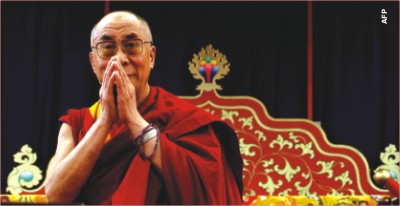
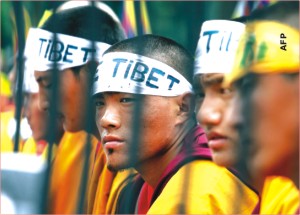 Dharamsala, Himachal Pradesh, North India. It is the seat of the Tibetan spiritual and political leader His Holiness the fourteenth Dalai Lama Tenzin Gyatso, and his government-in-exile, since 1960. According to the Chinese government, he is a "splittist," causing a separatist movement in China's territories. On the other side of story, he has been the chosen reincarnated leader of Tibet for centuries.
Dharamsala, Himachal Pradesh, North India. It is the seat of the Tibetan spiritual and political leader His Holiness the fourteenth Dalai Lama Tenzin Gyatso, and his government-in-exile, since 1960. According to the Chinese government, he is a "splittist," causing a separatist movement in China's territories. On the other side of story, he has been the chosen reincarnated leader of Tibet for centuries.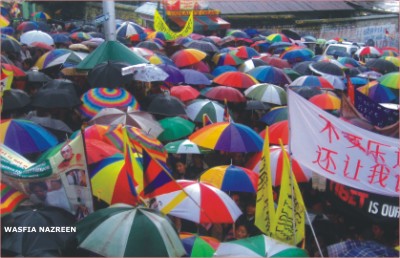
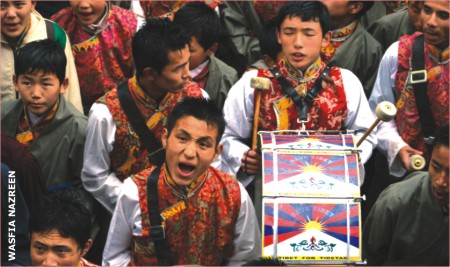
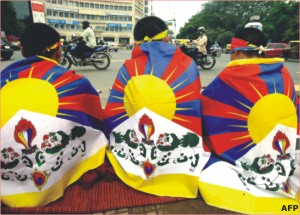 For example, Samye monastery, in which thousands of monks practiced and studied in the old days, now accommodates only 175. The moment a monastery shows "spiritual" success, for instance, of building up a local following, the place is unceremoniously shut down. The monks and nuns are also expelled right away.
For example, Samye monastery, in which thousands of monks practiced and studied in the old days, now accommodates only 175. The moment a monastery shows "spiritual" success, for instance, of building up a local following, the place is unceremoniously shut down. The monks and nuns are also expelled right away.